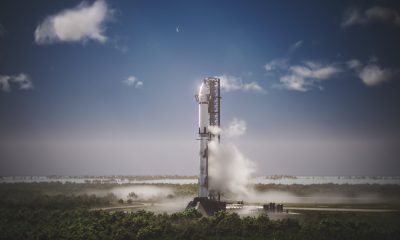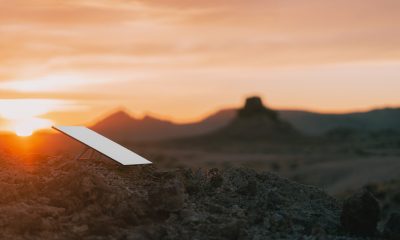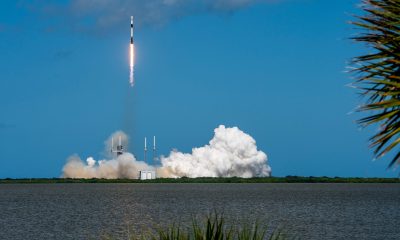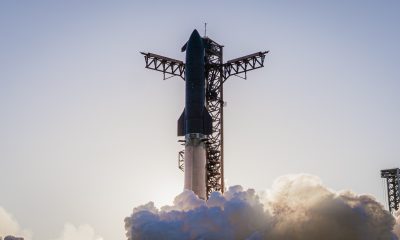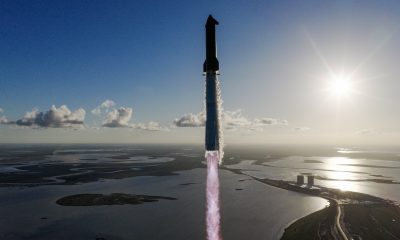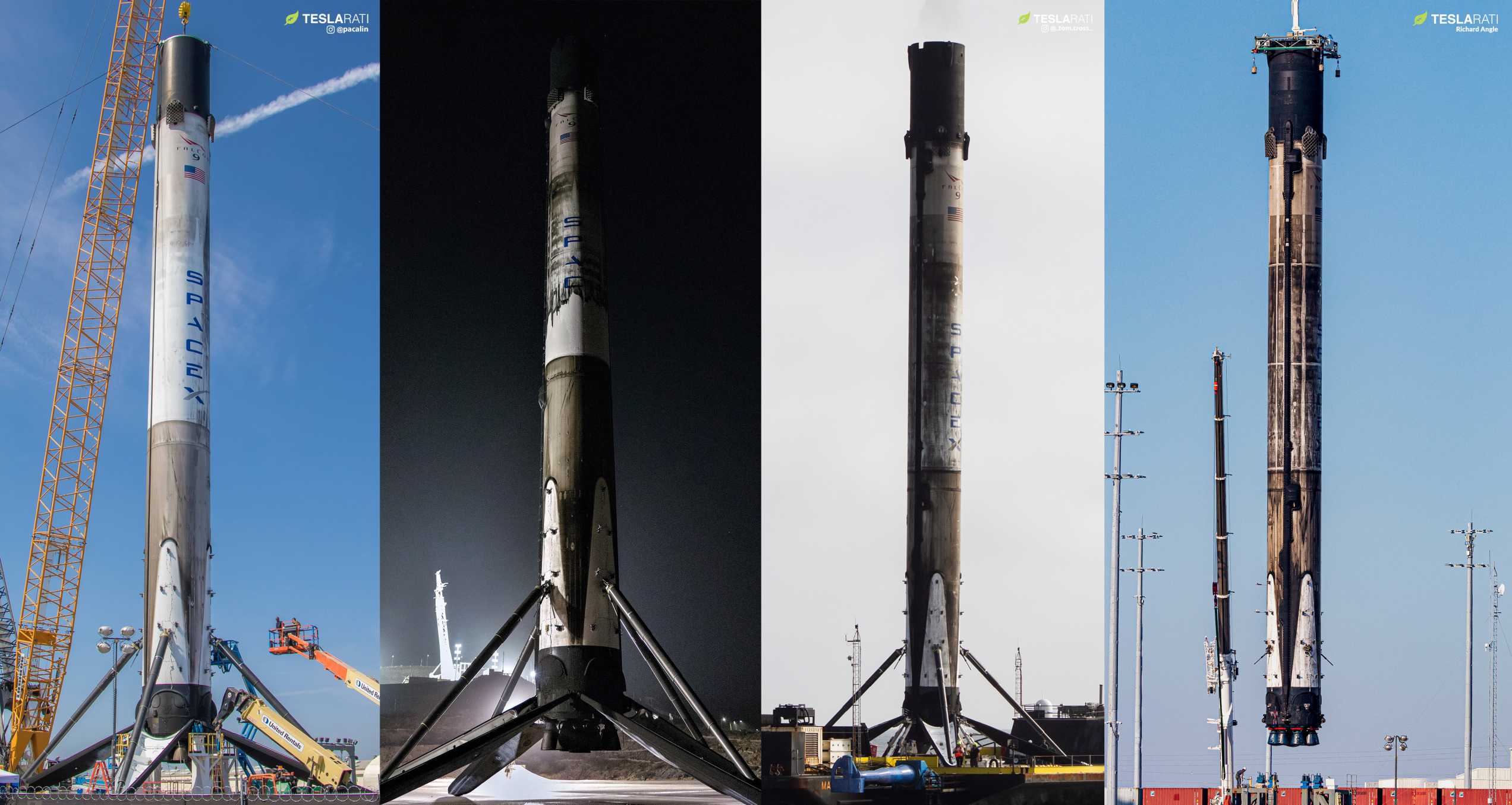
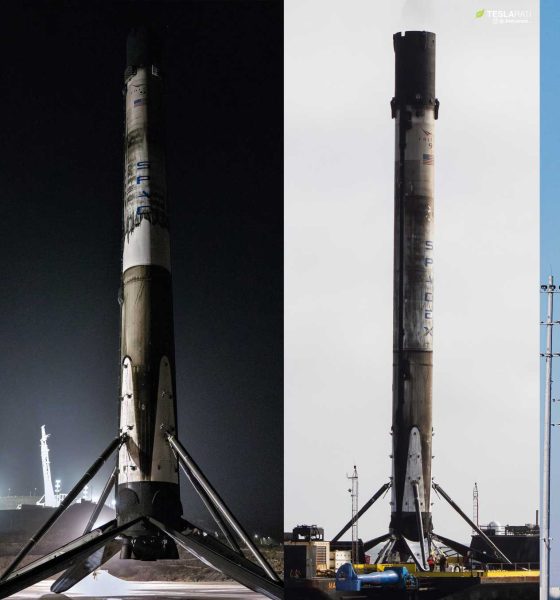
News
SpaceX's workhorse rocket is almost halfway to reaching ambitious reusability goals
Thanks to a recent cluster of major milestones, SpaceX’s family of Falcon 9 and Heavy rockets are rapidly nearing the halfway point along the path to several ambitious goals for booster and fairing reusability.
Back in the early 2010s, SpaceX’s CEO Elon Musk’s original dream was to make Falcon 9 and Falcon Heavy 100% reusable, meaning that the company would need to find ways to reliably recover boosters (first stages), payload fairings (or Dragon spacecraft), and the rocket’s upper (second) stages. The concept of Falcon 9 second stage reuse actually survived all the way into 2018 before Musk ultimately conceded defeat, accepting that Falcon 9 and Heavy simply didn’t offer the performance necessary to make full reusability a worthwhile investment. The concept, however, still lives on in SpaceX’s next-generation Starship launch vehicle.
This does mean Falcon rockets will never be fully reusable, but it’s still up to SpaceX to decide how far they’ll push the envelope with the rockets’ existing reusable hardware. At the moment, it appears that a vast majority of Falcon rockets will be able to be routinely recovered and reused, capitalizing on the fact that Falcon 9 and Falcon Heavy boosters already represent some 50-75% of the cost of building each two-stage rocket. While Falcon upper stages and Dragon trunks will never be reused, both booster and payload fairing reuse are rapidly approaching their own unique halfway points on the path to ambitious reusability targets.
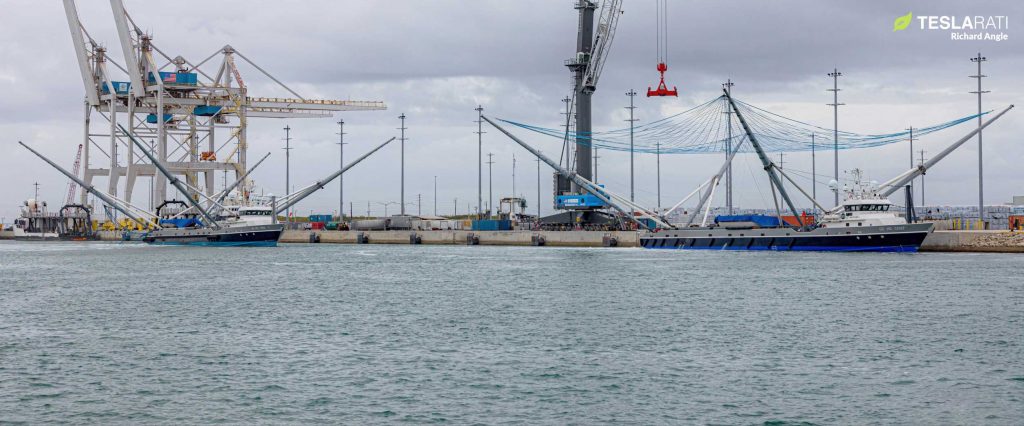
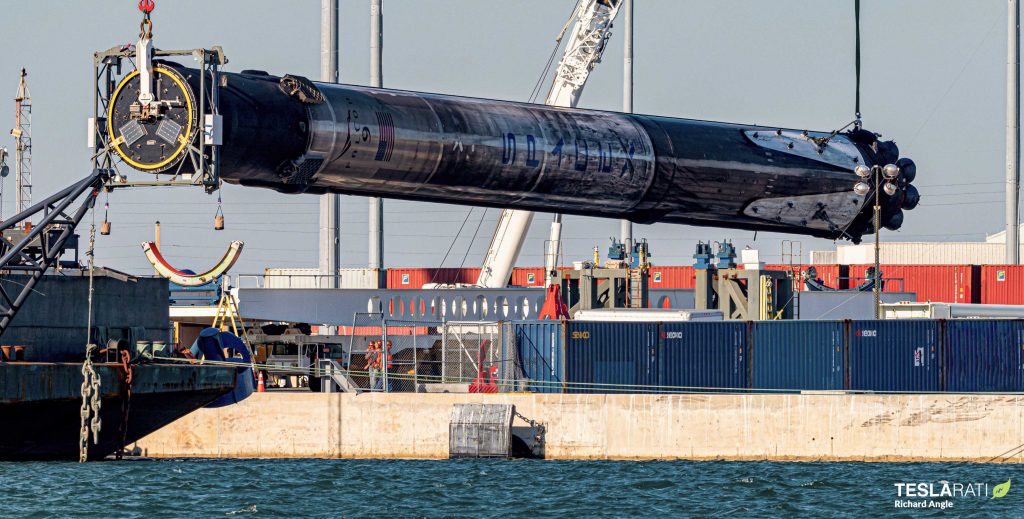
Shortly after SpaceX’s January 29th Starlink V1 L3 launch, carrying the third batch of 60 upgraded v1.0 satellites to orbit, twin fairing recovery ships GO Ms. Tree (formerly Mr. Steven) and Ms. Chief teamed up for their second-ever simultaneous fairing catch attempt. Ms. Chief – only active since November 2019 – reportedly just barely missed her first successful catch, while Ms. Tree managed to snag one of the Falcon 9 fairing halves in her massive net – the ship’s third successful catch.
Worth an estimated $3M per half according to CEO Elon Musk, Falcon 9’s payload fairing represents approximately 10% of the rocket’s total manufacturing cost. Made out of a carbon fiber and aluminum honeycomb composite material, fairings also also takes a disproportionate amount of time and space to produce – primarily due to their large size (a school bus could comfortably fit inside a fairing) and the need for commensurately large curing ovens. That composite honeycomb structure also makes it relatively easy for Falcon payload fairings to suffer from corrosion when dunked in seawater, leading SpaceX to the seemingly bizarre solution of installing giant arms and nets on ships.
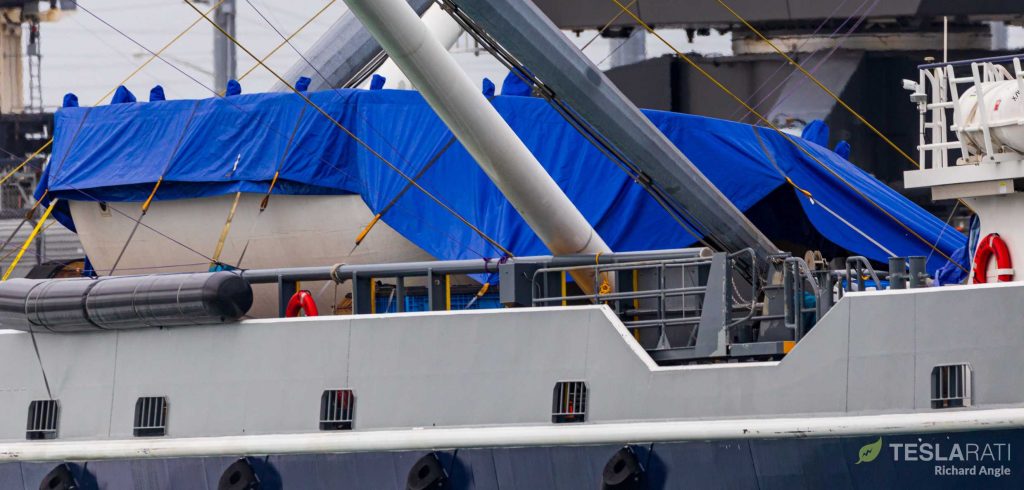
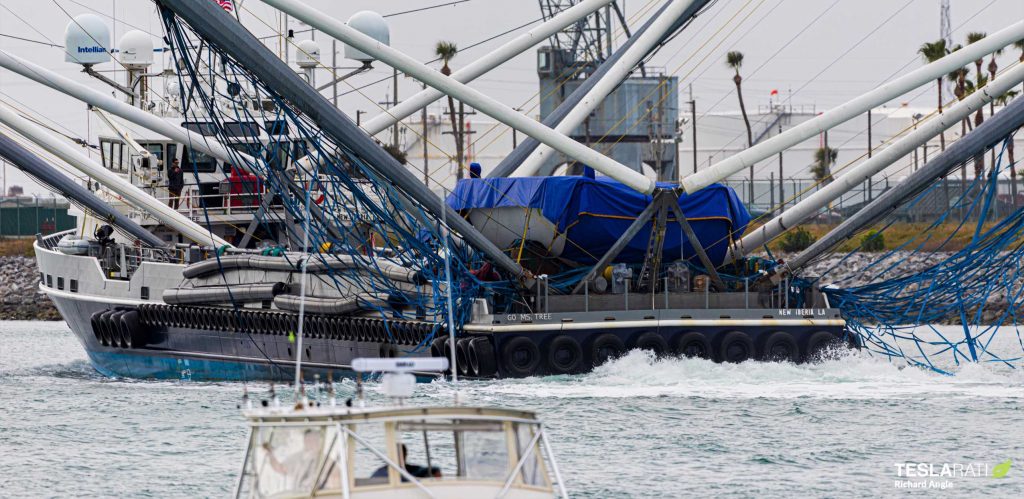
Catching fairings has proven to be incredibly unforgiving, however, and SpaceX has simultaneously worked to make its Falcon fairings much more waterproof (and thus resistant to corrosion) while keeping them as light as possible. In fact, SpaceX’s first fairing reuse occurred less than three months ago and used two halves that previously landed in the Atlantic Ocean, demonstrating that difficulties reliably catching fairings will not stand in the way of reuse.
Ms. Chief missed her January 29th catch attempt, she still managed to fish her fairing half out of the ocean, while Ms. Tree’s successfully-caught half means that SpaceX ultimately recovered the full Starlink V1 L3 fairing. With a little luck, that recovered fairing will launch again in the near future.
Five for 5
Simultaneously, SpaceX is making excellent progress along the path to airliner-like rocket reusability. In November 2019, on the same Starlink mission that debuted flight-proven fairings, Falcon 9 booster B1048 became the first SpaceX rocket to launch (and land) four times. Less than two months later, Falcon 9 B1049 doubled down on that reusability milestone, becoming the second booster to launch and land four times, followed by Falcon 9 B1046 just 12 days later. Falcon 9 B1046 was (intentionally) destroyed after its fourth launch, precluding a fourth landing attempt, but it emphasizes just how confident SpaceX is in Falcon 9’s Block 5 upgrade.
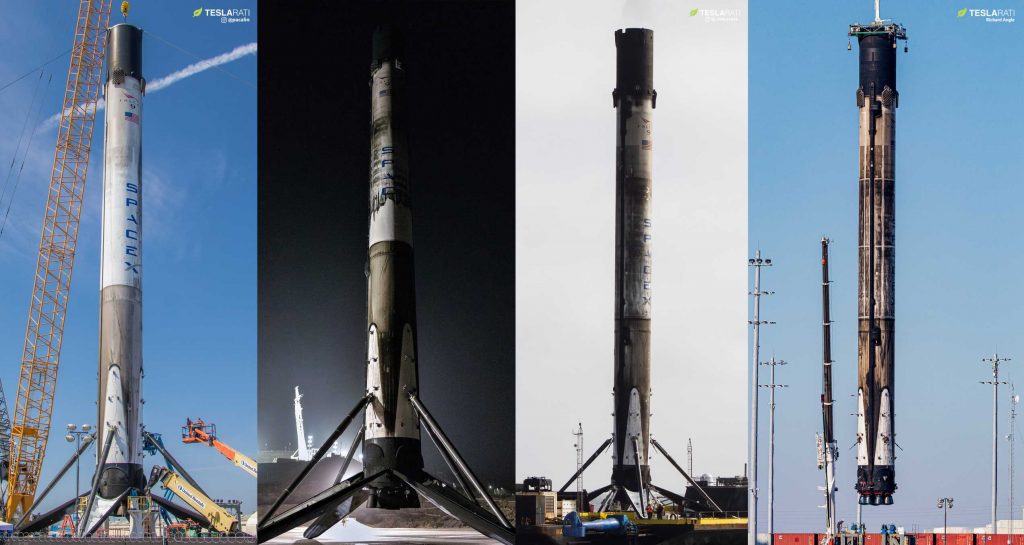
Designed to allow each Falcon 9 and Heavy booster to perform a minimum of 10 launches and landings, the Block 5 upgrade is potentially just a few weeks away from reaching the halfway point along the path to that ambitious reusability design goal. Speaking at the NASA Kennedy Space Center earlier this month, a SpaceX engineer recently revealed that a Falcon 9 booster would conduct its fifth launch in support of a Starlink mission (either Starlink V1 L4 or L5) scheduled no earlier than (NET) mid-to-late February.
Pictured above, Falcon 9 booster B1048 – the first to launch four times – is the likeliest candidate for the first fifth flight of a SpaceX rocket. If the booster’s reuse goes as planned, it’s safe to say that Falcon 9 B1049.4 will follow closely on the heels of its predecessor with its own fifth-flight milestone. All things considered, SpaceX’s workhorse rocket is rapidly approaching the zenith of its theoretically-achievable reusability.
Check out Teslarati’s Marketplace! We offer Tesla accessories, including for the Tesla Cybertruck and Tesla Model 3.
News
Tesla Robotaxi test units spotted in new region ahead of launch
These validation units are used to gain additional data for Tesla’s internal use, or even potentially for regulatory purposes that the company can share with agencies that will eventually grant a license to operate Robotaxi in the state.
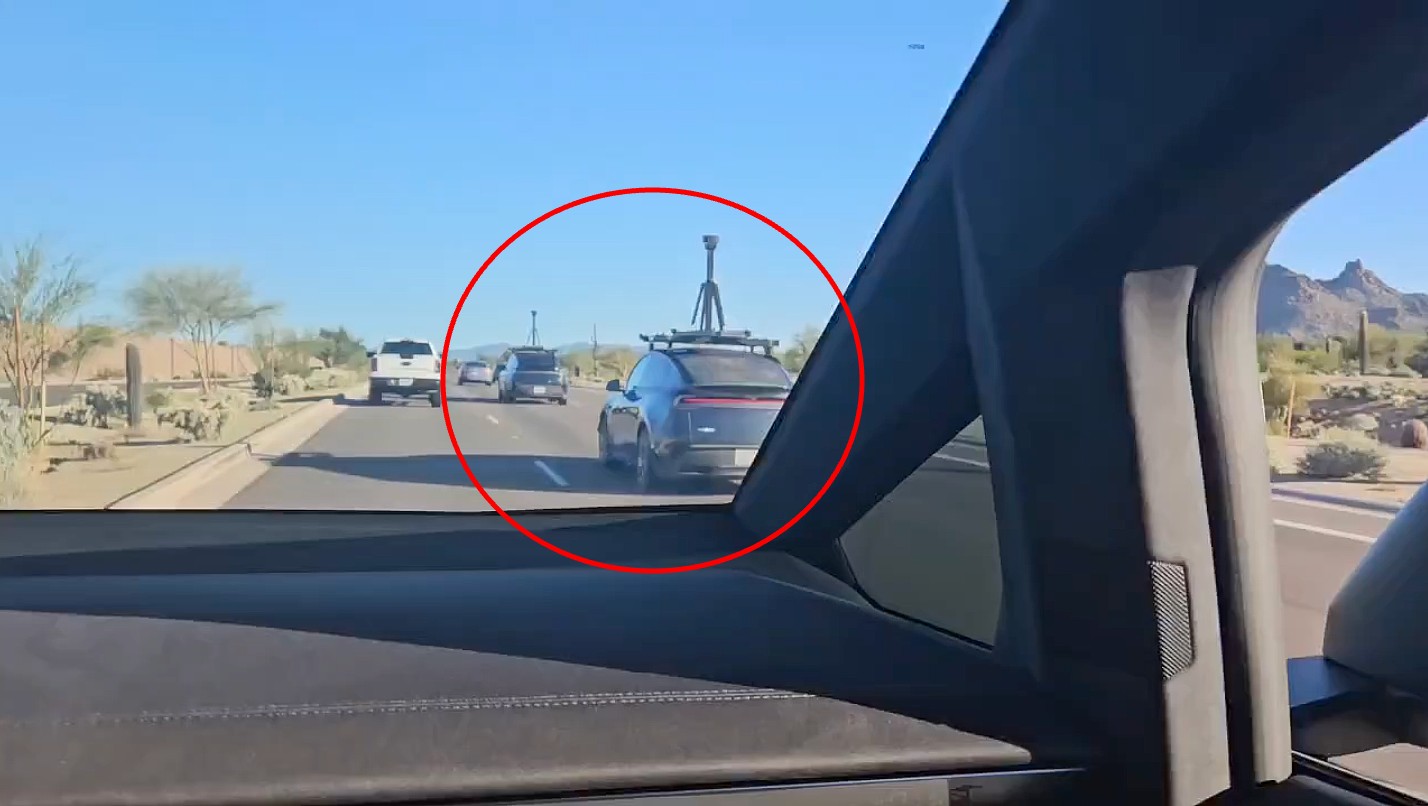
Tesla Robotaxi test units are being spotted in various new regions ahead of their launch in new states. Tesla is aiming to launch in at least a few new states in the coming months as it is ramping up hiring for the Robotaxi program and aiming to expand its ride-hailing service.
Already active in Austin, Texas, and the California Bay Area, Tesla is looking to expand its Robotaxi operations to new states. It’s had its eyes set on Nevada, Florida, and Arizona, which have seemed to have the most movement of the three prospects over the past month or so.
That trend is continuing.
Earlier this month, we reported on two Robotaxi units spotted testing with LiDAR rigs for ground truth validation in Gilbert, Arizona. Noted Cybertruck owner and enthusiast Greggertruck spotted the two units traveling on a highway.
Now, those same two units, or at least they appear to be, were spotted in Scottsdale, which is also a suburb of Phoenix, like Gilbert is, with the same LiDAR rigs:
Real world AI coming to Scottdale! Tesla robotaxi spotted beginning testing! @SawyerMerritt @elonmusk @CuriousPejjy pic.twitter.com/D2eUmQsiao
— MpWraps (@MWraps30584) October 29, 2025
These validation units are used to gain additional data for Tesla’s internal use, or even potentially for regulatory purposes that the company can share with agencies that will eventually grant a license to operate Robotaxi in the state.
Tesla is not a company that utilizes LiDAR for its everyday self-driving efforts, as it has utilized only cameras for the past several years.
Tesla Vision, as the company calls it, is what CEO Elon Musk feels is needed to achieve a fully autonomous network of vehicles, which will eventually need zero supervision for passenger transportation.
LiDAR is utilized by other companies, like Waymo, but Tesla has maintained that it is not necessary for several years. Musk has called it a “crutch” for achieving the proper self-driving tech, and the company only uses it for an additional bit of data.
Tesla has been operating its Robotaxi service in Austin since late June, and it has expanded its service area in the city to nearly 300 square miles, with its most recent expansion occurring earlier this week.
Elon Musk
Tesla’s popular side business is going to get bigger, Elon Musk says
It took several years to get the Diner developed, built, and opened. On July 21, Tesla launched the Diner to the public at 4:20 p.m. local time (of course), after years of development. Musk first offered the idea of a drive-in Supercharger Diner back in December 2018.
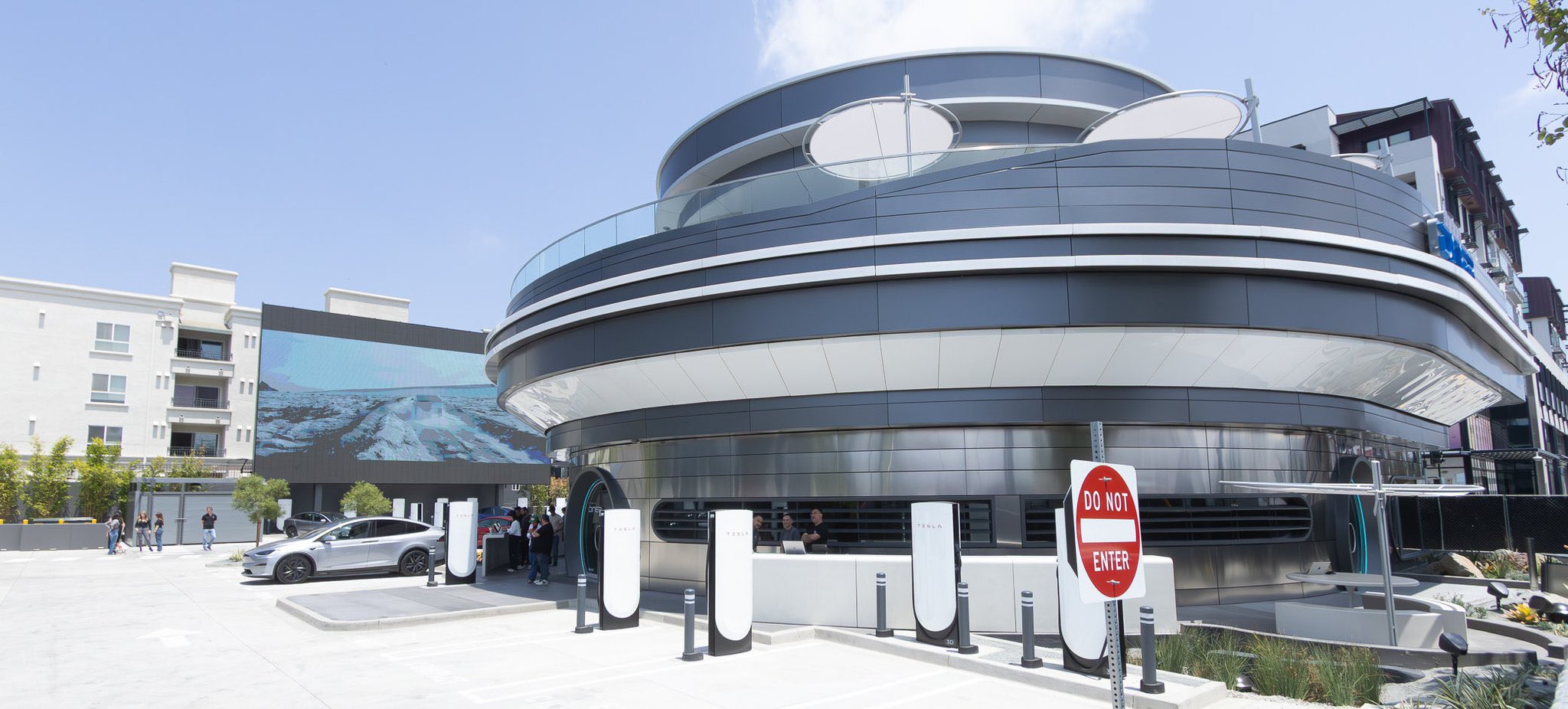
Tesla will open two new Diner locations in the United States after its first location in Los Angeles has been a raging success, as it is constantly packed and serving food for 24 hours a day, every day.
Tesla CEO Elon Musk said that the initial Diner location on Santa Monica Boulevard is “going well,” and based on reviews and its constant out-the-door lines, it is safe to say it has been a major outlet of interest for people in the area.
It features two massive movie screens, a menu that is locally sourced and has been created by a world-class chef, and Supercharging for EVs. It truly is the perfect stop for those who are hungry, need entertainment, or need a quick charge.
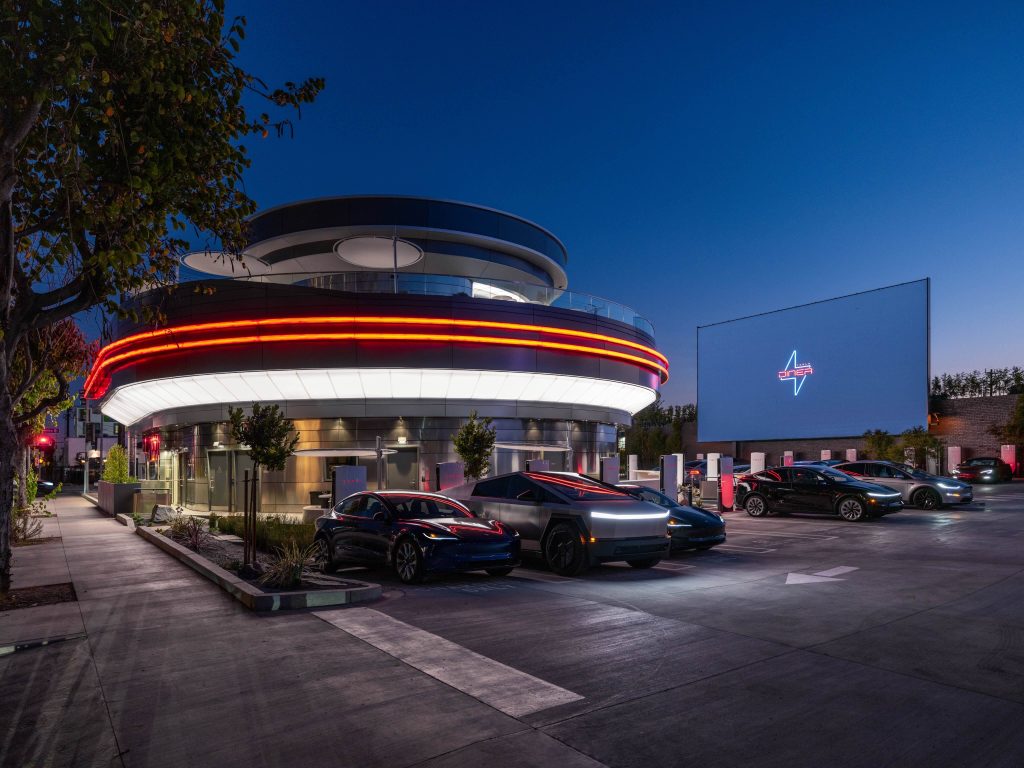
Credit: Tesla
So far, Tesla has not released too many details on the success of the restaurant, but it did state in a graphic for its Q3 Supercharging stats that it sold roughly 50,000 burgers at the Diner in Q3, roughly 715 each day. Burgers are not the only thing on the menu, either.
With how well it has gone, Musk is now considering the possibility of new locations that are notable to Tesla, including Austin and Palo Alto.
On Friday, Musk revealed he believes it “probably makes sense to open one” near Gigafactory Texas and Engineering HQ in Palo Alto:”
The futuristic Tesla Diner is going well. Probably makes sense to open one near our Giga Texas HQ in Austin and engineering HQ in Palo Alto. 😋 https://t.co/l0DUtR8CFg
— Elon Musk (@elonmusk) October 31, 2025
It took several years to get the Diner developed, built, and opened. On July 21, Tesla launched the Diner to the public at 4:20 p.m. local time (of course), after years of development. Musk first offered the idea of a drive-in Supercharger Diner back in December 2018.
By 2023, Tesla had secured building permits and broken ground on the site in September of that year.
Since its launch, it has been a popular hotspot for Tesla fans and others to visit, although it has attracted unwanted attention from protestors as well.
Cringey protestors are outside the Tesla Diner in Los Angeles singing “Elon Musk has got to go”
These people are absolutely nuts pic.twitter.com/LZ0U6rpMIn
— TESLARATI (@Teslarati) October 27, 2025
They look hungry. If they walked inside and ordered some food, maybe they’d stop yelling into microphones and threatening Musk.
Elon Musk
Elon Musk’s AI empire grows as xAI leases Palo Alto space near Tesla
The expanding footprint of Elon Musk’s companies in Palo Alto bodes well for the CEO’s plans in the area.
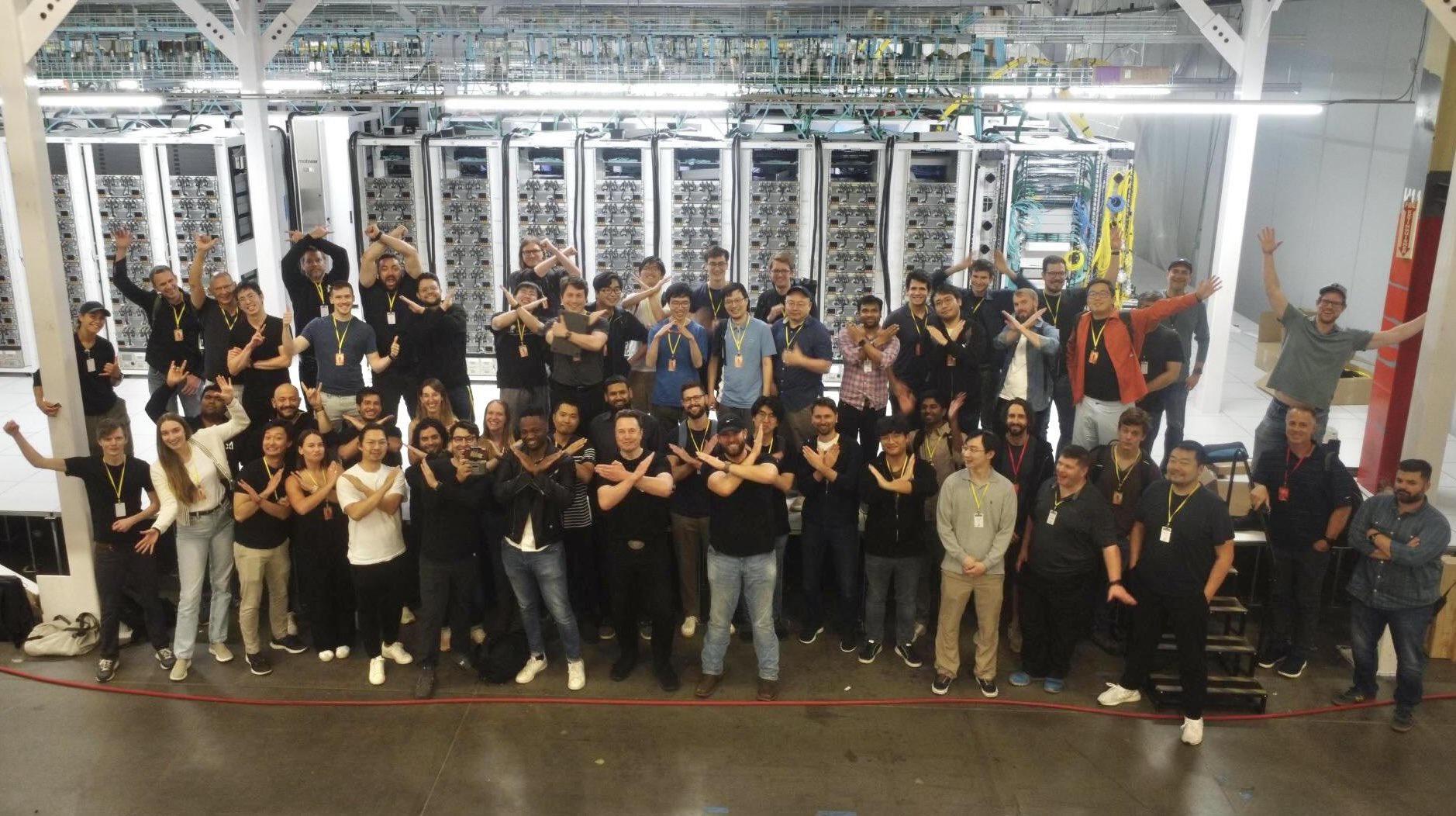
Elon Musk’s artificial intelligence startup, xAI, is expanding its Silicon Valley footprint, leasing roughly 105,000 square feet of office space at Palo Alto’s Page Mill Center, just blocks away from Tesla’s engineering complex.
Musk’s deepening Silicon Valley footprint
People familiar with the matter have informed the San Francisco Business Times that xAI’s lease at Page Mill Center may already have been finalized, adding to the company’s existing headquarters at 1450 Page Mill Road. The two offices share a parking lot, reflecting Musk’s strategy of consolidating his ventures. Tesla’s engineering hub is also just a few blocks away.
The new offices form a growing cluster of Musk-led companies in the heart of the Valley and come as xAI has listed over 250 job openings. These include listings for engineers, designers, and technical staff, among others.
xAI’s aggressive hiring push hints at rapid scaling, which makes quite a lot of sense considering the company’s ambitious projects. xAI oversees the large language model Grok and other AI initiatives such as the newly launched Grokipedia, and the startup has also acquired the social media platform X. Real estate owner Hudson Pacific Properties, the owners of Page Mill Center, have so far declined to comment.
AI demand and Silicon Valley’s office rebound
Silicon Valley’s office market, long subdued by remote work trends, is seeing renewed activity from AI firms. Hudson Pacific told investors this summer that tenant demand has reached a three-year high, with over half of new leases driven by artificial intelligence companies. Vacancy rates have now fallen for four straight quarters to 16.6% as well, CBRE reported.
The expanding footprint of Elon Musk’s companies in Palo Alto bodes well for the CEO’s plans in the area. Musk, after all, has previously butted heads with officials, resulting in his two biggest ventures, electric vehicle maker Tesla and private space company SpaceX, officially relocating their headquarters to Texas.
-

 Elon Musk2 weeks ago
Elon Musk2 weeks agoSpaceX posts Starship booster feat that’s so nutty, it doesn’t even look real
-

 Elon Musk2 weeks ago
Elon Musk2 weeks agoTesla Full Self-Driving gets an offer to be insured for ‘almost free’
-

 News2 weeks ago
News2 weeks agoElon Musk confirms Tesla FSD V14.2 will see widespread rollout
-

 News2 weeks ago
News2 weeks agoTesla is adding an interesting feature to its centerscreen in a coming update
-

 Elon Musk2 weeks ago
Elon Musk2 weeks agoTesla CEO Elon Musk’s $1 trillion pay package hits first adversity from proxy firm
-

 News2 weeks ago
News2 weeks agoTesla might be doing away with a long-included feature with its vehicles
-
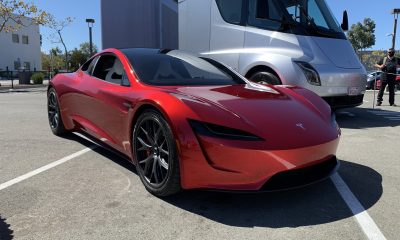
 News2 weeks ago
News2 weeks agoTesla updates fans on its plans for the Roadster
-
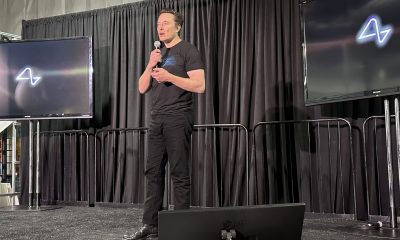
 Elon Musk2 weeks ago
Elon Musk2 weeks agoAfter moving Tesla to Texas, Elon Musk is back in the Bay Area with Neuralink expansion


